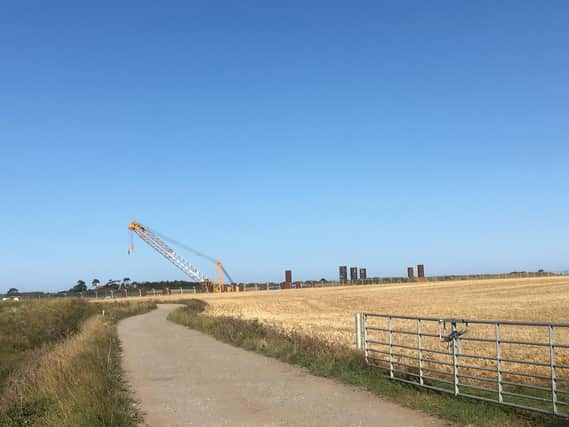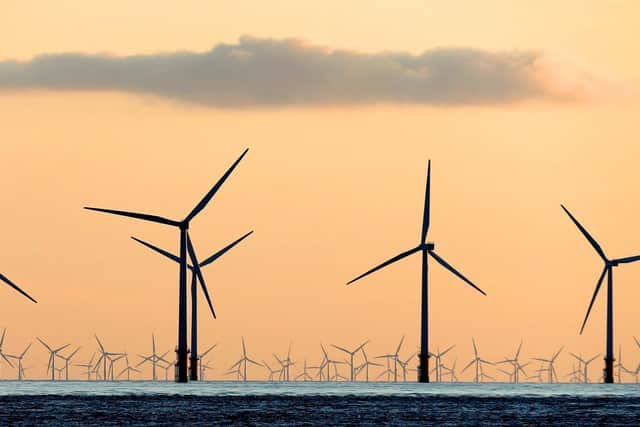East Yorkshire field used to test piling techniques for next generation wind turbines


Passersby on the B1242 coastal road will have spotted the large steel structures in a field at Cowden, near Aldbrough.
The 23 piles are helping researchers from Oxford University work out better ways of installing offshore wind turbines in deeper water, as part of an ongoing collaboration with Danish energy firm Ørsted.
Advertisement
Hide AdAdvertisement
Hide AdThey have been driven up to 32ft (10 metres) into the ground, some using hammers suspended from a crane.


They are left to settle for two months before being tested to replicate the stresses that offshore turbine foundations undergo as they are battered by wind and waves.
Ørsted said the insights from the pile load testing project would “help further limit potential environmental impact of next-generation turbines and minimise the materials required for offshore piles”.
They would also allow for installations in deeper water, allowing windfarms to be located further offshore.
Advertisement
Hide AdAdvertisement
Hide AdØrsted has just completed the building of the world’s largest offshore windfarm, Hornsea One, 75 miles off Yorkshire’s coast, and is building a second, with two more in the pipeline.
The project is expected to run until early 2021, at which point the land will be reinstated.
Ørsted, which also has the Westermost Rough wind farm, off Withernsea, said the tests will not require any further piling work and will not generate noise beyond the site.
The collaboration between the energy firm and the university started in 2018. At the time Byron Byrne, Professor of Engineering Science at the University of Oxford, said: “This exciting new phase of collaboration with Ørsted will put the next generation of offshore wind farms on more secure and cost-effective foundations through robust design methods for cyclic loading.
Advertisement
Hide AdAdvertisement
Hide Ad“This will be challenging but essential if the cost of offshore wind energy is to be further reduced.”
The UK Government has committed to 40GW of installed offshore capacity by 2030. So far around 12GW has been built.
Comment Guidelines
National World encourages reader discussion on our stories. User feedback, insights and back-and-forth exchanges add a rich layer of context to reporting. Please review our Community Guidelines before commenting.